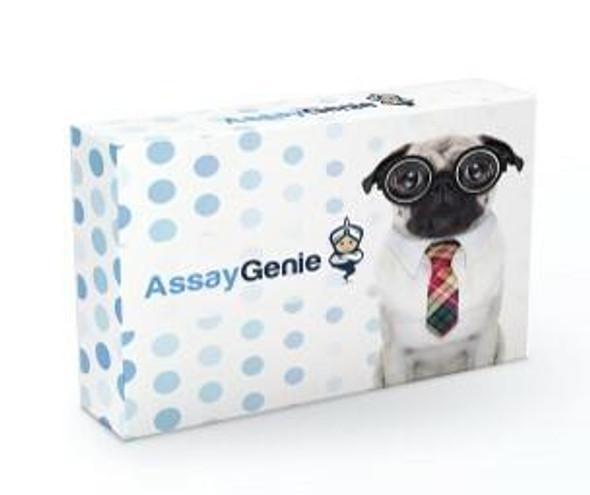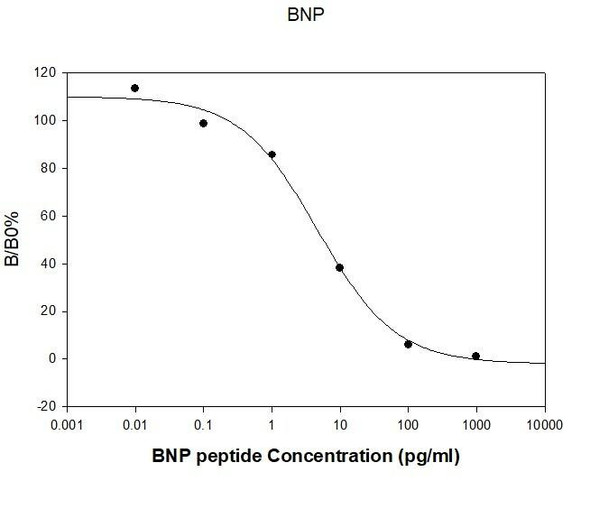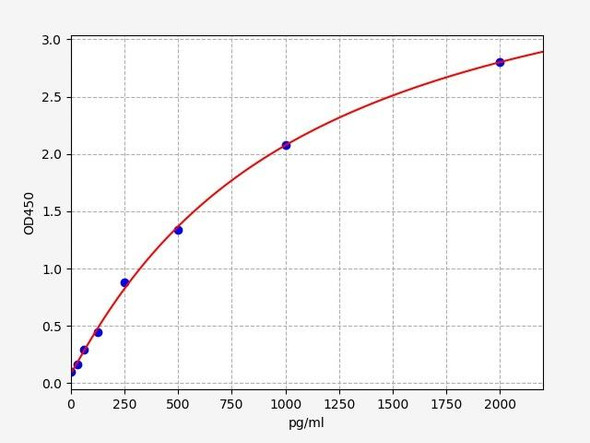Human BNP PharmaGenie ELISA - Kit Information
Brain natriuretic peptide (BNP), (aka B-type natriuretic peptide), is a 32 amino acid polypeptide secreted by the ventricles of the heart in response to excessive stretching of myocytes in the ventricles. BNP was originally identified in extracts of porcine brain, but in humans it is produced mainly in the cardiac ventricles. Its counterpart in rats is a 45 amino acid peptide hormone. At the time of release, a co-secreted 76 amino acid N-terminal fragment (NT-proBNP) is also released with BNP. BNP binds to and activates NPRA in a similar fashion to atrial natriuretic peptide (ANP) but with 10-fold lower affinity. The biological half-life of BNP, however, is twice as long as that of ANP. Both ANP and BNP have limited ability to bind and activate NPRB. Physiologic actions of BNP include decrease in systemic vascular resistance and central venous pressure as well as an increase in natriuresis. Thus, the resulting effect of BNP is a decrease in cardiac output and a decrease in blood volume. Tests showing elevated levels of BNP or NT-proBNP in blood are used as a diagnosis of heart failure and may be useful to establish prognosis in heart failure, as both markers are typically higher in patients with poorer outcome. Both BNP and NT-proBNP have been approved as a marker for acute congestive heart failure (CHF). The plasma concentrations of both BNP are increased in patients with asymptomatic and symptomatic left ventricular dysfunction. There is no level of BNP that perfectly separates patients with and without heart failure.
Human BNP PharmaGenie ELISA - Kit Data
| Product SKU: | SBRS0010 |
| Size: | 96T |
| Application: | Cross Reactivity: This ELISA kit shows no cross-reactivity with any of the adipokines tested: Ghrelin, Nesfatin, Angiotensin II, NPY and APC. |
| Uniprot: | P16860 |
| Gene ID: | 4879 |
| Gene Names: | NPPB |
| Synonyms: | Natriuretic peptides B (Gamma-brain natriuretic peptide) [Cleaved into: Brain natriuretic peptide 32 (BNP(1-32)) (BNP-32) BNP(1-30) BNP(1-29) BNP(1-28) BNP(2-31) BNP(3-32) BNP(3-30) BNP(3-29) BNP(4-32) BNP(4-31) BNP(4-30) BNP(4-29) BNP(4-27) BNP(5-32) BNP(5-31) BNP(5-29)] |
| Target Species: | Human |
| Compatible Sample Types: | Cell Culture Supernatants and Serum |
| Design Principle: | Competition-based |
| Method of Detection: | Colorimetric |
| Quantitative/Semi-Quantitative: | Quantitative |
| Range: | 0.1-1,000 pg/ml |
| Sensitivity: | 1.66 pg/ml |
| Recommended Dilution: | Human: 2X |
| Storage/Stability: | Standard, Biotinylated Brain Natriuretic peptide, and Positive Control should be stored at -20°C after arrival. Avoid multiple freeze-thaws. The remaining kit components may be stored at 4°C. Opened Microplate Wells and antibody (Item N) may be stored for up to 1 month at 2 to 8°C. Return unused wells to the pouch containing desiccant pack and reseal along entire edge. |
The Assay Genie Human BNP ELISA Kit will require other equipment and materials to carry out the assay. Please see list below for further details.
| 1. | Prepare all reagents, samples and standards as instructed. |
| 2. | Add 100 ul detection antibody to each well. |
| 3. | Incubate 1.5 h at RT or O/N at 4°C. |
| 4. | Add 100 ul standard or sample to each well. |
| 5. | Incubate 2.5 h at RT. |
| 6. | Add 100 ul prepared streptavidin solution. |
| 7. | Incubate 45 min at RT. |
| 8. | Add 100 ul TMB One-Step Substrate Reagent to each well. |
| 9. | Incubate 30 min at RT. |
| 10. | Add 50 ul Stop Solution to each well. |
| 11. | Read plate at 450 nm immediately. |






